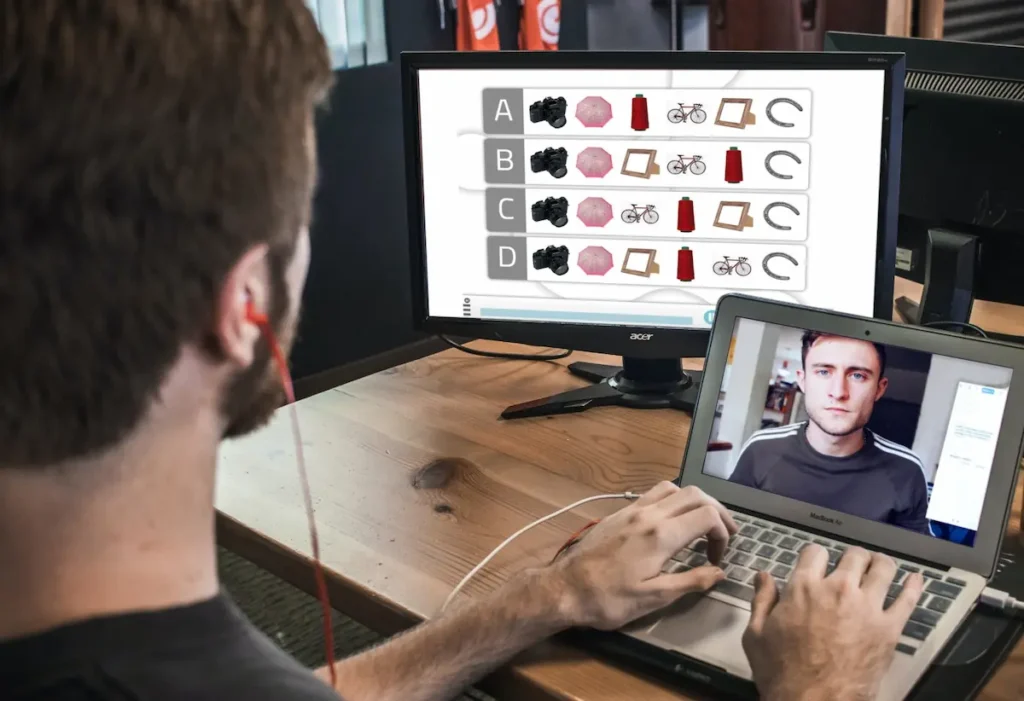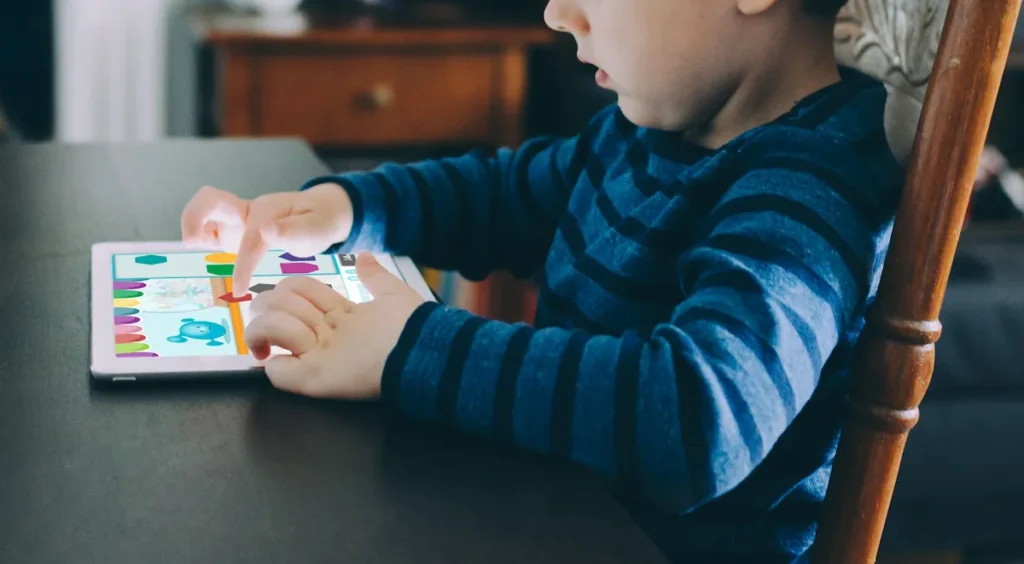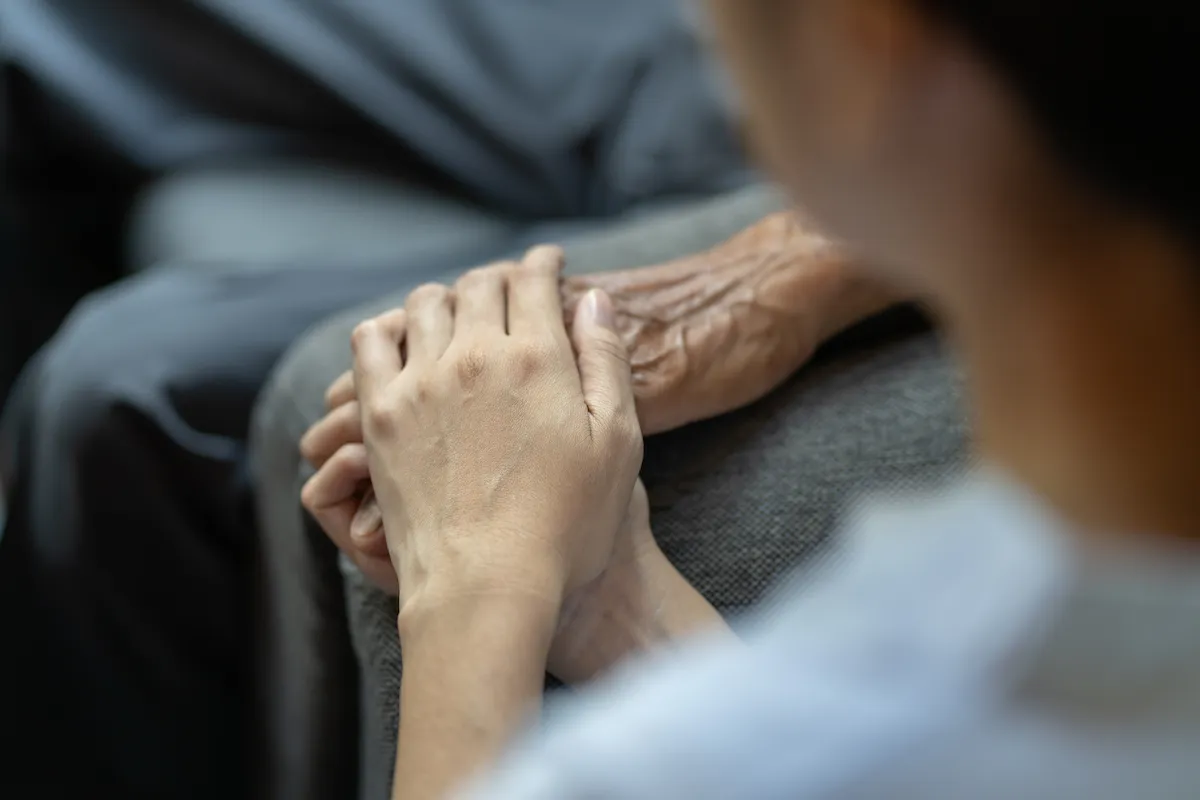Telerehabilitation consists of carrying out cognitive rehabilitation remotely through ICT (Information and Communication Technologies) and the Internet. It is characterized by the professional and the person to be rehabilitated not being in the same place.
The advantages of telerehabilitation seem very clear:
- Continue rehabilitation from the comfort of the patient’s own home at any time of day
- Maintain therapy remotely when the user is ill, working out of town, or on vacation.
- Avoid travel, something very important for people with mobility problems.
- Reinforce the activities worked on in the clinic
- Expand business capacity by managing the rehabilitation of users located in different parts of the world.
Benefits of telerehabilitation with NeuronUP for professionals
- Expand business capacity by managing the rehabilitation of users located in different parts of the world.
- Carry out a controlled and personalized remote intervention, since all results are stored on the platform.
- Redefine therapy based on each user’s progress, promoting continuous and structured improvement.
Benefits of telerehabilitation with NeuronUP for your users
- Continue their rehabilitation from the comfort of their own home at any time of day.
- Reinforce the activities worked on in the clinic.
- Enhance adherence to treatment.

Subscribe
to our
Newsletter
How to carry out cognitive telerehabilitation with NeuronUP?
We give you two options: live telerehabilitation with your users or asynchronous telerehabilitation.
Telerehabilitation with NeuronUP and videoconferencing platforms
If what you want is to telework with your user “live”, as if you were in the clinic, using a videoconferencing program is your best option.
- Arrange to meet with your user through a videoconferencing program. (In the next section we give you a list of platforms.)
- Log in to your NeuronUP account.
- Ideally you could use two monitors. One to see the user’s face and another to share the screen with NeuronUP activities.
- The user performs the activity remotely while the professional observes and evaluates them. Telerehabilitation.

Platforms for videoconferencing
There are a large number of telehealth platforms currently in use, but there are also communication tools that allow us to hold live videoconferences and share the screen with NeuronUP’s online activities.
These are just some examples of videoconferencing platforms, but there are many more. We recommend that you review them and choose the one that best fits your needs and those of your users. Also, we recommend that you check whether it complies with the legislation in your country to carry out telerehabilitation.
Telerehabilitation with NeuronUP2GO
If what you need is for your users to carry out the sessions in their own home for you to analyze them later, this is your option: telerehabilitation with NeuronUP2GO.
NeuronUP2GO are the at-home sessions offered by NeuronUP. How does it work?
- The professional registers the user so they can access from home.
- They schedule the sessions individually so that each user works on online rehabilitation activities from their own home.
- The professional schedules each user’s sessions by assigning a date range.
- Users connect to the platform and work on online cognitive stimulation exercises from their own home.
- The professional instantly receives all the results, analyzes them, and plans the next session.
In the following video you will learn how to work with NeuronUP2GO:
Centers that have started using NeuronUP2GO
An example is Down Madrid «We have implemented in the Employment Service and Occupational Center the use of NeuronUP, an online tool for cognitive stimulation specialized in intellectual disability, with the aim of improving training and stimulation of its users», they explain on their website.
«NeuronUP offers each user exercises for memory, executive functions, attention and other cognitive skills that adapt to the user’s performance as sessions progress, thereby offering a personalized and motivating learning experience. Furthermore, the tool also allows working on activities of daily living and social skills», the organization adds.
The first reActions, both from users and their families, are «encouraging, as they like the exercises, can do them with more autonomy and feel satisfied with their work and progress», explain the managers of Down Madrid.

Remote rehabilitation to work on cognitive functions
Another center that has joined remote rehabilitation through NeuronUP is Aura Fundació. «It is proving to be a magnificent experience for both users and AURA professionals», they explain.
«They continue to reinforce cognitive functions such as attention, memory, executive function, etc., from their homes and at any time of day. The professional team can manage and schedule the sessions of the specific programs that we have designed for all of them. The intervention remains personalized and, in this case, controlled remotely to adjust it to their needs and to be able to monitor the results, since these are stored on the platform allowing the program to be redefined if necessary», they proudly explain from the foundation for people with intellectual disabilities.
Online cognitive rehabilitation with children

Children also benefit from remote rehabilitation thanks to NeuronUP. For example the center Stimulos Atención Educativa explained on their social networks that, in these days when we all have to stay at home, they offer the possibility of doing online cognitive rehabilitation with NeuronUP. «The exercises can be done on the computer or on the tablet, ideal for doing good cognitive training at home while children have fun», emphasize Stimulos.
If you liked this post about online cognitive rehabilitation, you might also be interested in the following post about telerehabilitation:
If you liked this post about our telerehabilitation platform for professionals, you might be interested in these NeuronUP articles.
“This article has been translated. Link to the original article in Spanish:”
NeuronUP: plataforma de telerrehabilitación para profesionales







 Reliability and validity of cognitive tests with smartphones for frontotemporal lobar degeneration
Reliability and validity of cognitive tests with smartphones for frontotemporal lobar degeneration
Leave a Reply